-
Car Reviews
- All reviews
- Midsize SUVs
- Small cars
- Utes
- Small SUVs
- Large SUVs
- Large cars
- Sports SUVs
- Sports cars
- Vans
Latest reviews
- Car News
-
Car Comparisons
Latest comparisons
- Chasing Deals
New RAV4 hits Australian soil for a first sample in hybrid guise. Expected to be a best-seller, we find out how big the improvements are
Possibly one of the most evolved nameplates in history, the Toyota RAV4 started as a rebellious shrunken SUV, almost a Suzuki Jimny competitor and has become the family car of choice for the Australian public.
The first four generations set the name in motion, but it was the fifth generation, launched in Australia in May 2019, that rocketed RAV4 popularity into another dimension.

Building on the newfound dynamic sparkle of the 12th-gen Corolla on its TNGA-C platform, the GA-K underpinned RAV4 was not only spacious, comfortable and frugal, it was also good to drive — that put it in hot demand.
So much so that, compounded by the COVID-19 pandemic, near-new examples were trading hands well above MSRP. A subsequent cost-of-living crisis followed, and few rivals were able to match its fuel efficiency.
It was the car no self-respecting Aussie family could be without.
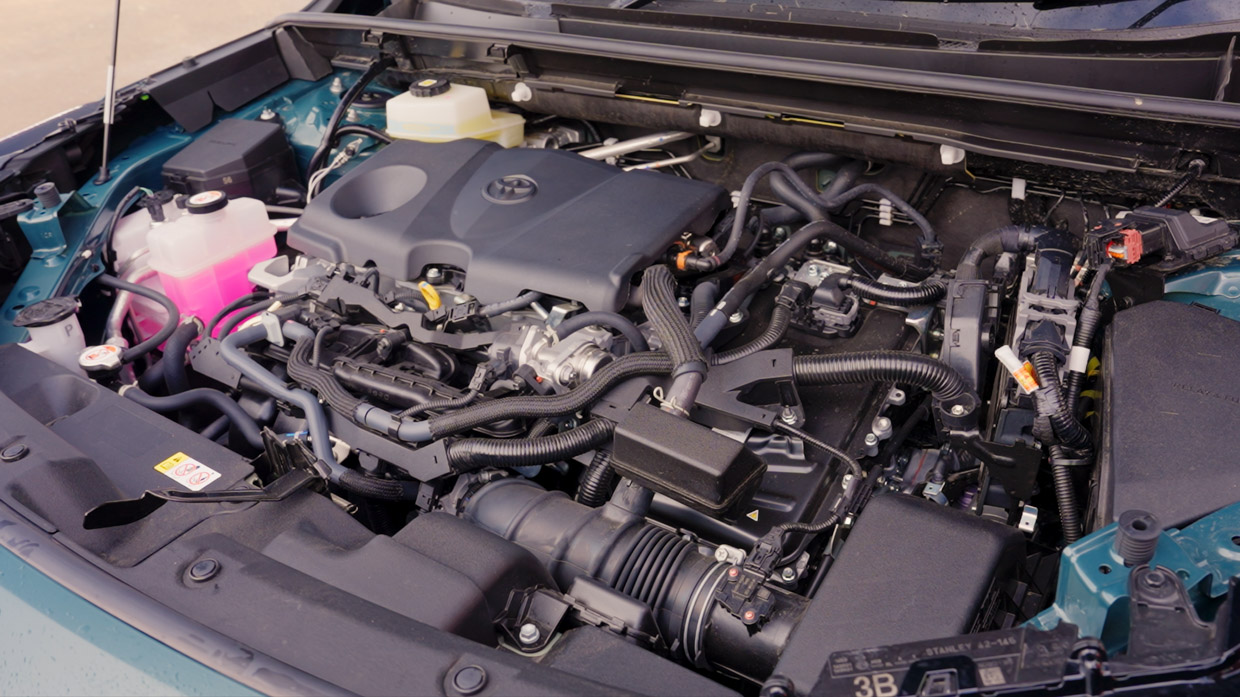
Don’t expect the same stratospheric leap as its predecessor, like the Hilux and predicted new Corolla, the latest RAV4 is a development of existing parts. A refinement of an already-popular recipe instead of clean-sheet thinking.
Spending big on an all-new combustion/hybrid engined car in the current will-they-won’t-they electric car climate doesn’t make any sense when you already have a winner on the books. Cynical? You could argue. Effective? Almost certainly.
This is why the sixth-generation Toyota RAV4 takes all the goodness of the current car, adds some on-trend boxy styling, more technology, and in-theory greater efficiency, to keep what’s good good, and gently refine what could be better.

Pictured: the repositioned Edge grade
You can read full RAV4 pricing and features here. In essence, Toyota has kept a familiar range structure starting with base GX FWD hybrid at $45,990 before on-road costs, or $3730 more than before.
Then comes GXL, upgrading wheels to 18-inch alloy items, adding rain sensing wipers and power driver’s seat adjust ($48,990). The repositioned Edge comes next in AWD only ($55,340) with seat heating and more off-road appearance, then it’s the urban-oriented XSE in regular ($58,340) and plug-in hybrid ($58,840) trims.
At the top of the regular tree is the familiar RAV4 Cruiser, with genuine leather trim, 20-inch alloy wheels, nine-speaker JBL sound system and more, from $56,990.
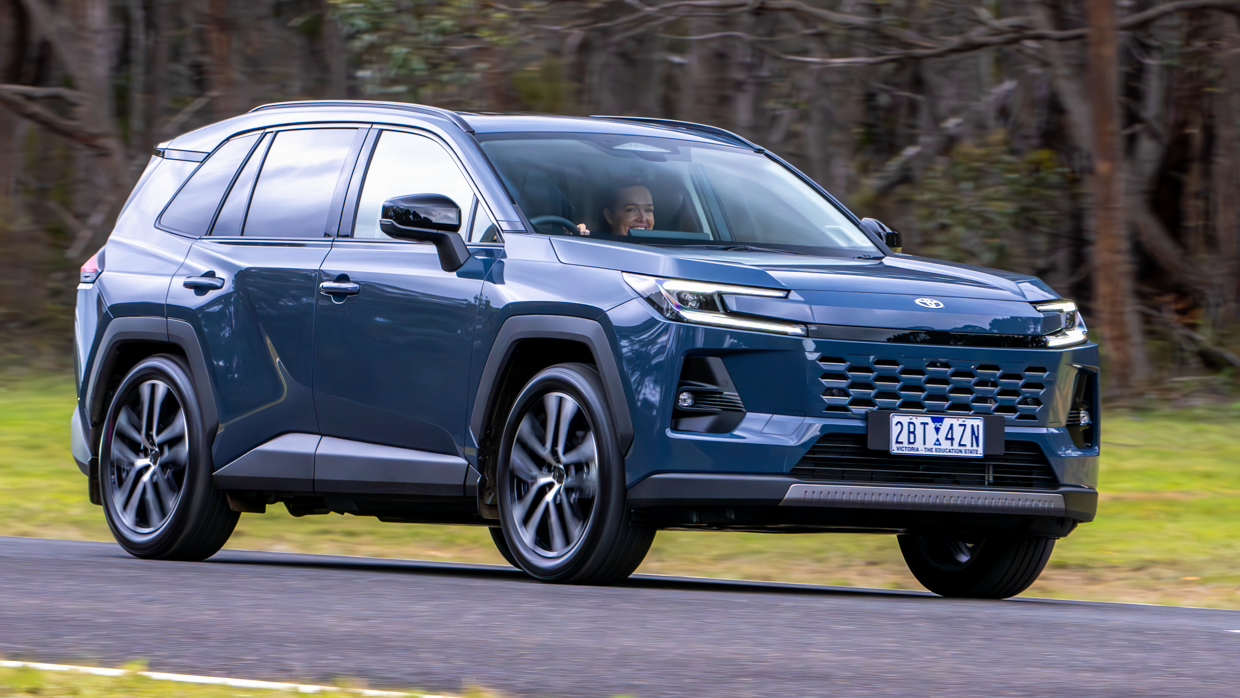
Pictured: the popular Cruiser grade
Rounding out the range is the all-wheel-drive GR Sport, producing 227kW with sportier seats and steering wheel, different bumpers, wider track and proper suspension changes for $66,340.
Adding plug-in hybrid (PHEV) is a nice bonus for RAV4, especially with Chinese challengers like the BYD Sealion 6, Geely Starray EM-I, Haval H6, Jaecoo J7 offering the partial-EV tech for bargain prices.
Ahead of the Australian launch of the new Toyota RAV4 in the first half of 2026, Toyota invited Chasing Cars to the Australian Automotive Research Centre (AARC) to drive pre-production examples of the new RAV4 on paved and loose surfaces.
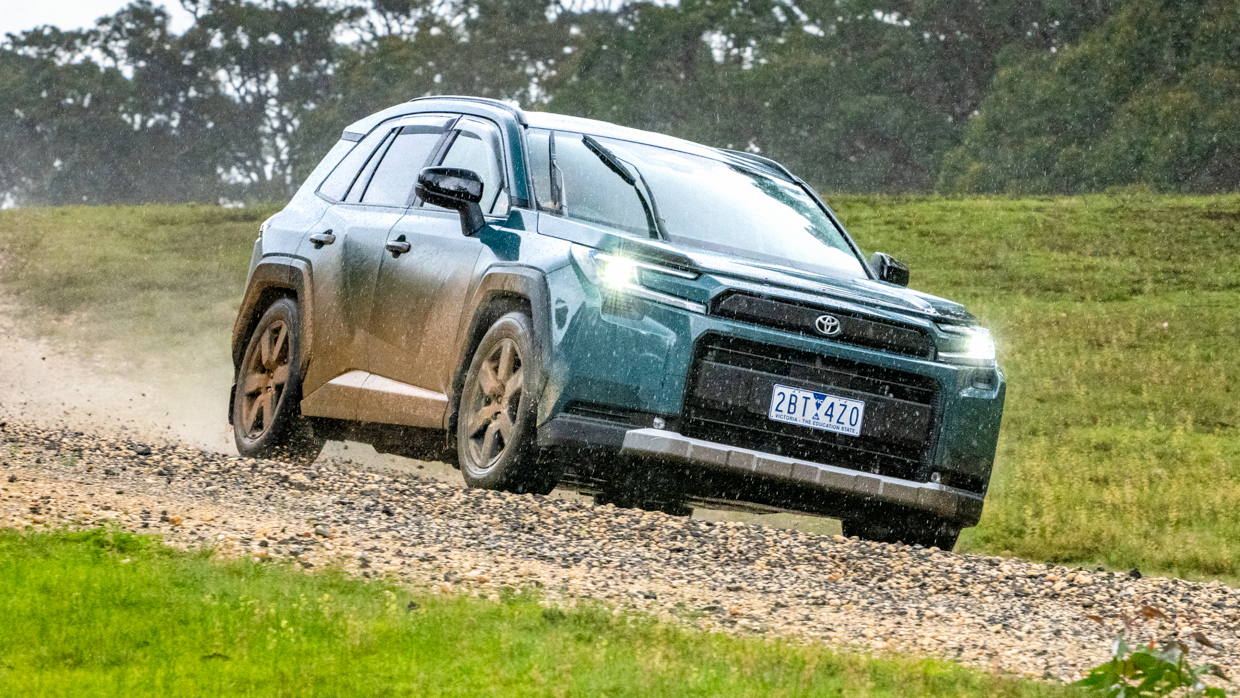
Toyota had both the newly-positioned, adventure-focused Edge hybrid AWD and luxe Cruiser hybrid FWD for us to drive. Both employ Toyota’s fifth-generation hybrid system with more efficient trans-axle and computers. Yet due to emissions, power is down 17kW in FWD and 20kW in AWD cars, for 143kW.
First, we hopped into a Daintree Green Edge hybrid on AARC’s second-class unpaved road loop. This is a high-speed, corrugated dirt road with tricky cambers and blind crests designed to mirror what you might encounter in country Australia.
Compared to the old RAV4, the new car’s steering has a little more weight around the straight ahead, with Sport mode adding to this.

Suspension compliance was generally good, with the RAV4 dealing with nasty corrugations at 80km/h well, if not providing magic-carpet smoothness. The RAV4 Edge was composed and sure-footed through sweeping bends, too.
A few issues we noticed were wind noise — this car was accessorised with weather shields, that may have compounded the problem — and random lane-keep assist interventions on dirt. As a pre-production vehicle, this was apparently not the final tune and also could not be disabled.
Time for a tarmac taste, this time in the Cruiser FWD including a back-to-back with the old car which, remember, packs an extra 17kW in front-drive guise. This back-to-back confirmed the new RAV4 has lost some snap.

The trade-off is more linear acceleration in the new car with petrol-electric changeover almost imperceptible and the petrol engine quieter overall. Traction control has matured as well, seemingly predicting wheelspin before it occurs where the old front-drive RAV4 clumsily spins, axle tramps, and clamps down.
Ride quality is different, but not necessarily better. The new Cruiser rides on up-sized 20-inch alloy wheels, compared to the old car’s 18s, which likely contributed to the firmer secondary ride feel.
Taken as a whole, the new RAV4’s ride feels about half a step worse than the outgoing model, but the difference is small. As for handling, our brief taste suggests the RAV4 continues to be good, bordering on excellent.
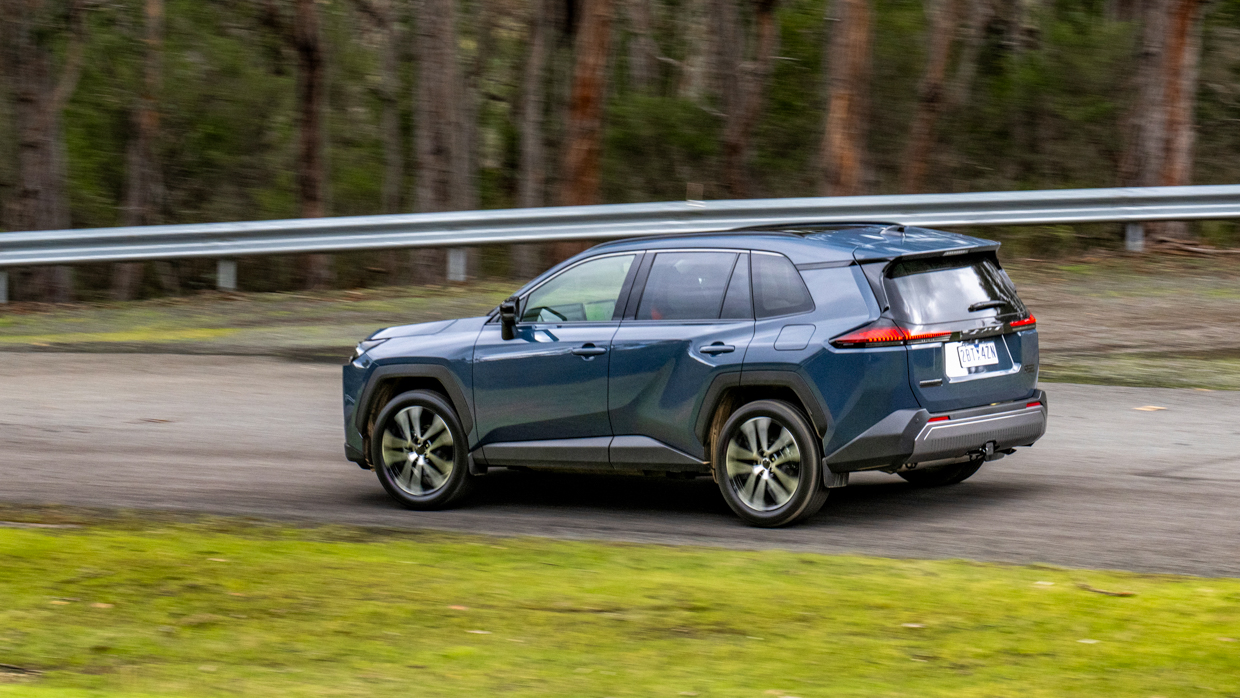
Rounding out the refined driving experience is the brake pedal, which is about 10 percent more consistent with improved feel. While we would have liked to see some advancements in damper technology or more power, we expect to find greater efficiency in the real world with the new system.
There is a big change at the top of the range with a 227kW plug-in hybrid GR Sport flagship for $66,340 before on-road costs that we’re yet to sample.
This tale of subtle improvement continues inside where the new RAV4 moves on from its predecessor mostly without throwing out the good touch points.

One thing we didn’t like was the new, touch-heavy HVAC interaction. Instead of the old car’s chunky, rubberised temp controls and physical fan-speed, the new car is all screen and the dials are swapped for drive mode selectors.
Functionality will require more interrogation in the real world, but there is at least a consistent bar (like the Volkswagen Tiguan) with temperature, seat heating, recirculation, and other shortcuts — and vent direction remains physical, unlike the Haval H6.
The RAV4’s 12.9-inch touchscreen runs Toyota’s new ‘Arene’ operating system with improved smartphone control. Response seemed better than the existing RAV4 and other Toyota systems.

Goodies like wireless Apple CarPlay, clever storage spaces (including the tray in front of the passenger) and generous cup holders continue to be a feature.
The door cards have been mildly reprofiled with squared off bottle holders and you can now have twin wireless charging pads in XSE and Cruiser trims, while two 15W USB-C charge points are standard across the board.
Material quality levels up inside, increasing the new RAV4’s perceived quality, though there are still scratchy materials if you go hunting. One small detail that has a big effect is Toyota’s choice to lower the dashboard height by 40mm, drastically increasing visibility and letting in more light.
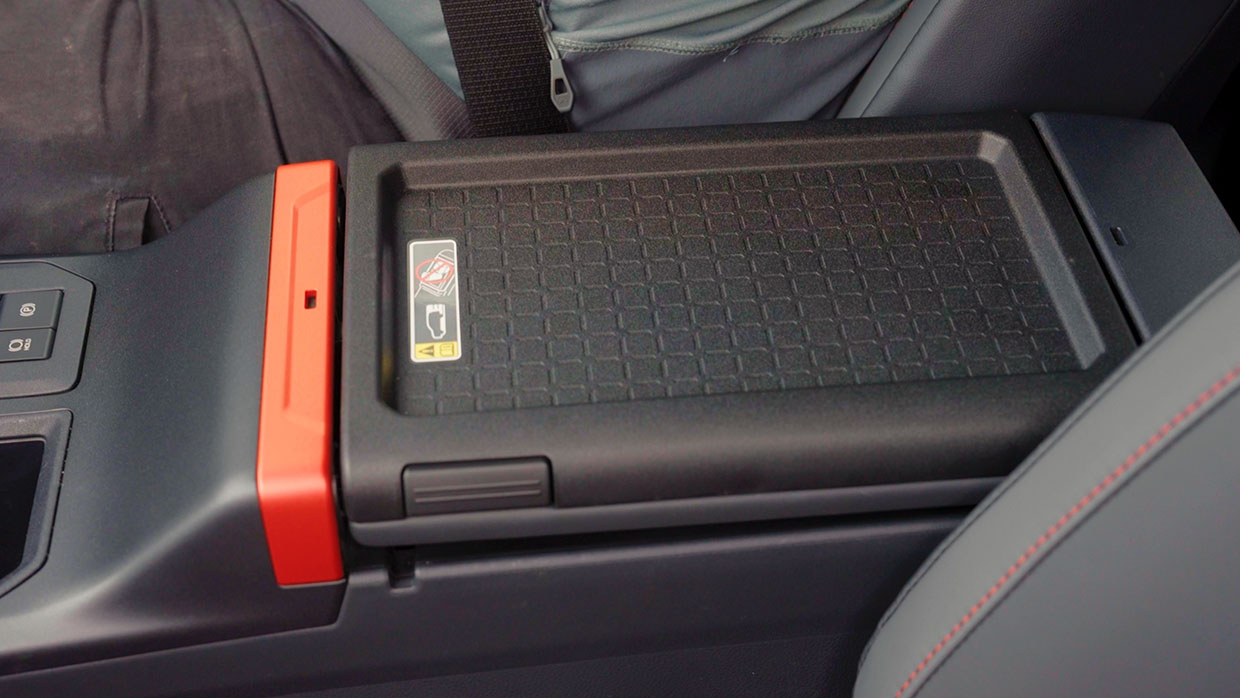
The Edge we spent most time in has contrast orange stitching and anodised-look trims around the cabin to feed into its adventure branding, rather like its Subaru Forester Sport and Nissan X-Trail N-Trek rivals.
The RAV4’s back seat continues to be spacious and light-filled with plenty of visibility. There’s ample head, leg and toe room for adults, and the width across the back is good despite a narrower body on-paper.
Amenities include a two-position reclinable backrest (as before), a fold-down armrest with two cup holders, a pair of USB-C charge points, two adjustable air vents and door bins. Materials are good in the back, including soft-touch on the door tops.

A power tailgate is standard on tested Edge and above (but not GXL), which also features a rubber floor mat plus a space saver spare under the boot floor.
The new Toyota RAV4 doesn’t shift the goal posts like its predecessor. Instead, it’s a collection of refinements made to a recipe that was already proving extremely popular.

The big news remains the plug-in hybrid models, which are more keenly priced than key Japanese rival Mitsubishi Outlander, yet above new-start Chinese-made choices.
By sticking to a familiar collection of parts, it’s easy to imagine the new RAV4 will be just as reliable as its predecessor. That it has more equipment, better-defined grades and improved refinement should simply add to RAV4’s appeal — watch out, sales charts.
About Chasing cars
Chasing Cars reviews are 100% independent.
Because we are powered by Budget Direct Insurance, we don’t receive advertising or sales revenue from car manufacturers.
We’re truly independent – giving you Australia’s best car reviews.
The estimate provided does not take into account your personal circumstances but is intended to give a general indication of the cost of insurance, in order to obtain a complete quote, please visit www.budgetdirect.com.au. Estimate includes 15%^ online discount.
^Conditions Apply
Budget Direct Insurance arranged by Auto & General Services Pty Ltd ACN 003 617 909(AGS) AFSL 241 411, for and on behalf of the insurer, Auto & General Insurance Company Limited(ABN 42 111 586 353, AFSL 285 571).Because we don’t know your financial needs, we can’t advise you if this insurance will suit you. You should consider your needs and the Product Disclosure Statement before making a decision to buy insurance. Terms and conditions apply.
Indicative quote based on assumptions including postcode , 40 year old male with no offences, licence suspensions or claims in the last 5 years, a NCD Rating 1 and no younger drivers listed. White car, driven up to 10,000kms a year, unfinanced, with no modifications, factory options and/or non-standard accessories, private use only and garaged at night.
^Online Discounts Terms & Conditions
1. Discounts apply to the premium paid for a new Budget Direct Gold Comprehensive Car Insurance, Third Party Property Only or Third Party Property, Fire & Theft Insurance policy initiated online on or after 29 March 2017. Discounts do not apply to optional Roadside Assistance.
2. Discounts do not apply to any renewal offer of insurance.
3. Discounts only apply to the insurance portion of the premium. Discounts are applied before government charges, taxes, levies and fees, including instalment processing fees (as applicable). The full extent of discounts may therefore be impacted.
4. We reserve the right to change the offer without notice.